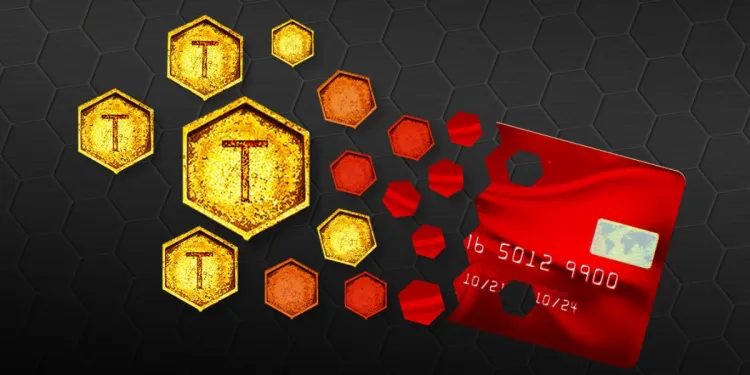TOKENIZATION: REAL-WORLD ASSETS, REAL-WORLD BENEFITS
As blockchain technology continues to reshape the traditional financial market, tokenization emerges as a significant opportunity to replace outdated systems in place today.
At its core, tokenization involves bringing Real World Assets (RWAs), both tangible and intangible, onto the blockchain.
However, the impact of tokenization on financial markets extends beyond simply digitizing assets.
When evaluating its effects, the Stellar network serves as an early example of the true potential of tokenized RWAs for the future.
Stellar has collaborated with leading financial institutions for years to tokenize RWAs and recently introduced Protocol 20 to incorporate Soroban smart contract functionality into the network.
Consequently, major financial institutions like WisdomTree, Franklin Templeton, and Circle have adopted Stellar as their preferred platform, with their Stellar digital assets approved by regulatory agencies such as the SEC and NYDFS.
Furthermore, Stellar’s popularity extends globally, with entities like ABN Amro and the Bank for International Settlements (BIS) Innovation Hub embracing the technology.
Positioned as an early leader in tokenization, the Stellar network was inherently suited for this use case from its inception.
While other networks strive to catch up with tokenization, Stellar’s native features continue to drive adoption from global financial institutions and reinforce confidence in the potential of on-chain RWAs.
In this discussion, we’ll explore why tokenized RWAs offer an opportunity to disrupt traditional finance and why major institutions are integrating Stellar into their processes.
Tokenized Opportunities
Tokenization sets itself apart from other blockchain innovations by delivering mutual benefits to individuals interacting with tokenized RWAs and the institutions tokenizing them.
During a recent discussion, Denelle Dixon, CEO of the Stellar Development Foundation, emphasized tokenization’s role in creating financial access for individuals: “Financial access is the tool that we’re seeing now. Not only does it save value for the entities who are tokenizing, but [RWAs] bring opportunity for those who haven’t had the opportunity to grasp it.”
Products like WisdomTree Prime offer a comprehensive saving, spending, and investing experience, enabling individuals to generate yield inaccessible through traditional means like a checking account. Stablecoins like USDC broaden financial access by providing USD exposure worldwide, irrespective of location.
For institutions, tokenization presents an opportunity for cost savings and efficiency maximization. Asset issuers can streamline operations and reduce backend costs by eliminating manual processes and intermediaries. Tokenization can enhance liquidity and lower intermediary fees for compliance reporting, monitoring, management, and third-party brokerage in products like money markets.
Tokenization also significantly enhances efficiency. Today’s financial system often faces delays due to physical document transfers and bureaucratic procedures. With tokenization, settlement is immediate and final, nearly eliminating the gap between transaction and settlement. For example, Liquid Mortgage reduced Mortgage-Backed Securities (MBS) reporting from 55 days to 30 minutes through tokenization.
Stellar Benefits
Stellar leads the way in tokenized real-world assets, accounting for approximately 40% of the tokenized treasury market, making it the second-largest blockchain by TVL according to RWA.xyz data.
For many global financial institutions, the Stellar blockchain offers an ideal platform for asset tokenization. Franklin Templeton chose Stellar for its low-cost network, built-in asset controls and compliance features, and straightforward developer experience.
Major decisions like these typically stem from partnerships, but Franklin Templeton’s decision was influenced by Stellar’s benefits and accessibility as an open-source project.
During a panel discussion at the World Economic Forum, Dixon revealed that she learned of Franklin Templeton’s use of Stellar through its SEC filing in 2019, signaling the commencement of its money market project. Dixon expressed satisfaction with the collaboration and its value to new customers using the Benji app.
As Franklin Templeton paved the way for integrating traditional finance with blockchain technology, other financial institutions began conducting their experiments.
Stellar offers asset issuers robust built-in features, enabling quick asset tokenization with minimal expertise, low development costs, and strong asset issuer controls.
Support for asset issuers extends beyond the network level. Stellar collaborates with asset issuance service providers like Fireblocks, Bitgo, and Copper to offer services such as custody and analytics.
The Stellar ecosystem hosts various platforms, wallets, and on- and off-ramps to support newly minted assets, expanding the addressable market for asset issuers.
Conclusion
Tokenizing assets on Stellar is user-friendly and efficient, allowing assets to be issued in four simple steps without requiring a smart contract.
With the introduction of smart contracts on Stellar, asset tokenization will continue to evolve, encompassing everyday financial products like lending, borrowing, savings, and automatic yield calculations.
Explore tokenization on Stellar and its sandbox environment to experience the tokenization process on the Stellar Testnet without the need for coding.
The tokenization of RWAs represents one of the most significant innovations in the modern financial industry.
As individuals and institutions recognize the opportunities presented by tokenization, Stellar remains committed to lowering barriers to entry and supporting the evolution of finance.
Source: Techeconomy

